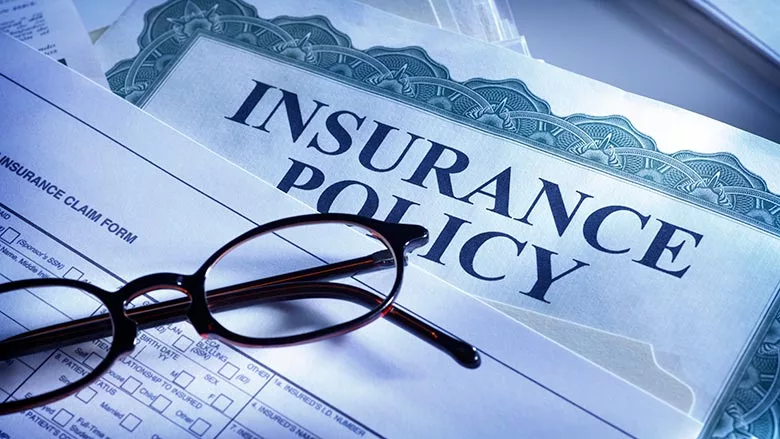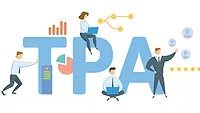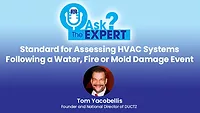Assessing Water Damage: Insurance Companies' Struggle

Photo credit: DNY59 / iStock / Getty Images Plus via Getty Images
Working with insurance companies can be a challenge no matter what kind of disaster a property is facing, but when it comes to the safety of a job site, the categories of water damage become a major concern for residential or commercial properties, and those working on the project too.
It will always be the job of the insurance company to find the most cost-effective way of solving a problem, and sometimes that means they can erroneously or intentionally miscategorize different forms of water intrusion. When this happens, both the safety of the clients, and that of the specialists hired to repair the damage are all jeopardized.
What Are the Water Damage Categories?
Water damage is typically categorized into three primary categories based on the source and nature of the water. These categories are:
Category 1 (Clean Water): This category involves water from a clean and sanitary source, such as broken water supply lines or faucets. It poses no substantial risk to human health if handled promptly.
Category 2 (Gray Water): Gray water contains contaminants that can potentially cause discomfort or illness if ingested by humans. It includes water from dishwashers, washing machines, or sump pump failures.
Category 3 (Black Water): The most severe category, black water is highly contaminated and poses significant health risks. It includes sewage backups, floodwaters, or water from natural disasters too.
Insurance Provider Challenges in Categorizing Water Damage
Despite this seemingly straightforward classification, insurance companies face several challenges when assessing the categorization of water damage. These challenges stem from the dynamic nature of water-related incidents, and a lack of understanding or training on the part of the insurance adjuster, agent, or representatives.
Water can find its way into various types of properties in several different ways, and sometimes those pathways can get mixed together making it a challenge to determine the original source of the contamination for insurance providers. This is where seasoned professionals, such as restoration specialists can help to guide the assessments for the most accurate categorization.
Unknown Sources
Determining the precise source of water damage can be challenging for an insurance adjuster or insurance company representatives in general, but when multiple potential sources exist, these difficulties become compounded and amplified.
Determining the precise source of water damage can be challenging for an insurance adjuster or insurance company representatives in general, but when multiple potential sources exist, these difficulties become compounded and amplified. A seemingly clean category one water leak might originate from an uncontaminated source within the building structure, and then encounter category three contamination along the way, complicating the categorization process. These inaccurate judgements can put both the clients and the restoration professionals in harm’s way if not correctly addressed.
Delayed Discovery
Water damage is not always immediately apparent. Sometimes leaks can happen in small quantities, intermittently, or in a variety of other ways that don’t materialize in a readily noticeable manner. Hidden leaks behind walls or in crawl spaces may go undetected indefinitely, and this can alter the accuracy of any categorization efforts.
Delayed discovery through inaccurate assessments and miscategorization can ultimately increase the scope of the loss significantly as well as the potential dangers faced by clients and restoration professionals. By the time the source of damage becomes more evident, the water may have undergone changes, or encountered various sources of contamination that then make categorization more challenging.
Changing Conditions
Water conditions can and usually will evolve over short periods of time. Clean water will almost always become contaminated if left untreated, and what initially appears as gray water can escalate to black water scenarios due to microbial growth and other contaminating factors.
A leak that happens from a pipe issue in the hallway may eventually flood into the bathroom and encounter further contamination where it goes from a category one scenario to a category three situation and still looks like the same water that started the problem.
Subjectivity and Ethics when Assessing Water Categorization
When it comes to the accurate assessment of water damage categories, there are several different issues that clients and restoration professionals face at the hands of inaccurate judgements from insurance company adjusters, agents, and representative staff.
Adjusters, agents, and other insurance company representative staff can make erroneous assessments when it comes to these scenarios because of many different factors, most are innocuous and understandable, while others are elevated ethical issues that unnecessarily put people and lives at risk simply for financial gain.
Assessor Expertise
The accuracy of water damage categorization relies heavily on the expertise and training of the assessors. Not all insurance claims adjusters, agents and other representatives within the organization are educated in mold contamination, or even water damage categories for that matter, and this knowledgebase or lack-there-of can be the source of some consternation.
Insurance company representatives, restoration professionals, and sub-contractors may interpret the same situation differently, leading to discrepancies in water categorization. The issue arises when those who have to live and work in the space are adversely affected by this categorization when it is inaccurate.
Technological Limitations
While technology has advanced in the field of water damage restoration, there is still a lack of universally adopted, standardized advanced detection methods. This lack of standardization across the board can hinder the ability of the assessor to precisely identify the water's origin and categorization accurately.
Instead, representatives rely on their knowledge and skillsets to make an on-site determination which may have questionable accuracy. This lack of data and understanding can put both the property owner and the restoration professionals at risk through contamination.
Financial Implications
Inaccurate categorization can lead to financial repercussions for both clients and restoration professionals too. Unanticipated secondary damage, mold growth, or health issues may result in higher claims payouts, and whenever money is involved in this process the ethical considerations may take a back seat for those less reputable providers.
When this occurs, both clients and the restoration professionals’ pocketbooks are affected, but also, and more importantly, their health and safety too! An accurate categorization of the higher levels of water damage means that the insurance provider will be forced to pay out more in claims, and this can cause them to misdiagnose the ultimate nature of the issue.
Health and Safety Risks
Misjudging the water damage category can expose individuals to unnecessary health and safety risks through bacteriological, viral, pathogenic or chemical contamination. Improper handling of tainted water could lead to serious health issues and diseases as well as to exacerbate property damage issues over time.
Getting the most accurate understanding of what water category a property is facing will make the lives and jobs of everyone involved in the restoration process much easier and safer. When insurance adjusters, agents and other insurance company staff assess a property inaccurately this leads to more demolition, more reconstruction, higher costs, potential health and safety risks, and missed expectations for everyone throughout the process.
Adjusting the Adjuster – Final Thoughts on Inaccurate Categorization
Accurate categorization of water damage is clearly a challenge for insurance adjusters, agents, and other representative staff, given the dynamic nature of water-related incidents and the potential for the bending of ethics for financial gain.
The complexities associated with source ambiguity, changing conditions over time, human subjectivity, and technological limitations contribute to the difficulty in achieving pinpoint accuracy when it comes to water damage categorization.
“One way to put everyone on the same page is to walk a mile in each other’s shoes. When a false categorization occurs with one of our projects, I like to ask a simple question ‘Would you let your baby crawl on the floor and then insert their fingers in their mouth?’ If the answer is no, then a re-categorization is necessary, and there usually isn’t an argument about it at that point.”
As the restoration and construction industries evolve, a concerted effort towards adopting advanced detection technologies, standardized protocols, and improved data integration can pave the way for more precise water damage categorization assessments.
Addressing the challenges claims adjusters face when categorizing water damage will not only help streamline the claims process but also contribute to the overall financial integrity of the industry from an ethical standpoint.
Ultimately, the more accurate a water categorization is, the safer the property owner and the restoration professionals working in these environments will be!
Looking for a reprint of this article?
From high-res PDFs to custom plaques, order your copy today!









